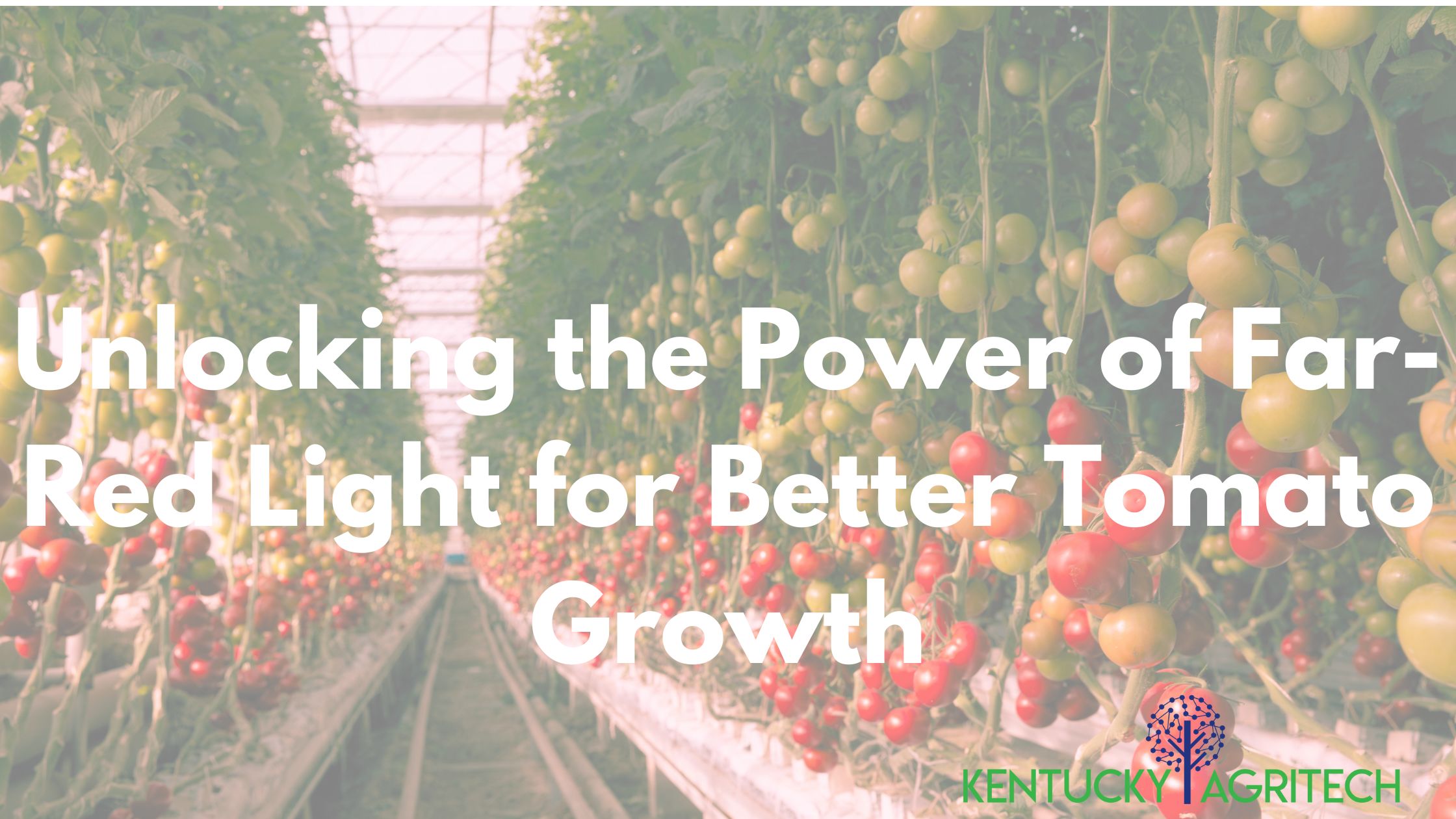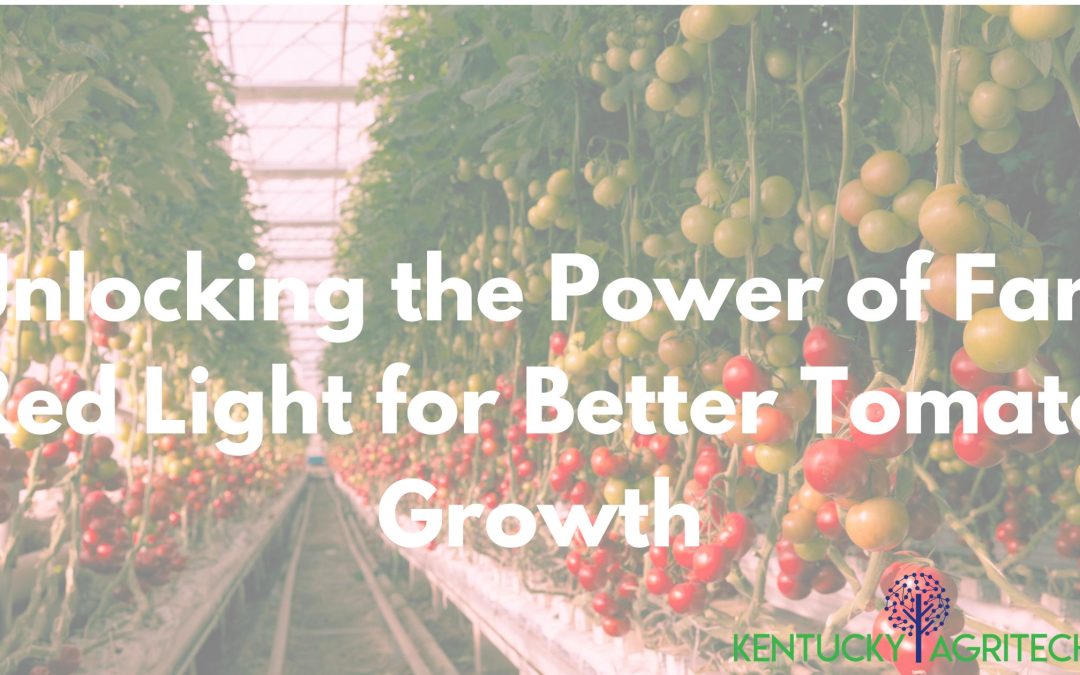
As modern agricultural practices evolve, growers are constantly looking for innovative ways to improve yields and optimize crop quality. One of the latest breakthroughs in tomato cultivation revolves around the strategic use of far-red light. By understanding how this specific spectrum of light impacts plant growth, tomato growers can take their production to the next level.
In this article, we’ll explore the research behind far-red light, its impact on tomatoes, and how growers can implement it to maximize their harvests.
What is Far-Red Light and Why Is It Important?
Far-red light falls within the 700-800 nm wavelength range, making it part of the infrared spectrum. While it is not visible to the human eye, it has a profound influence on plants, especially tomatoes. Unlike blue or red light, which are more commonly discussed in plant science, far-red light helps regulate key developmental processes in plants, such as:
- Seed germination
- Stem elongation
- Flowering
- Leaf expansion
In tomatoes, far-red light has been shown to promote balanced growth between the vegetative and reproductive stages. However, the duration of exposure to far-red light is critical—too little may not produce noticeable benefits, while too much can result in excessive stem elongation, making the plants weak.
Research-Backed Insights into Far-Red Light for Tomato Cultivation
Recent studies conducted by leading scientists from the Department of Plant Science, Horticulture, and Product Physiology at Wageningen University and Research have uncovered the optimal use of far-red light in tomato cultivation. This research was supported by collaborations with Signify Netherlands B.V. and BASF – Nunhems.
The key takeaway from their work is that far-red light can significantly improve photosynthesis and yield when applied in the right amounts. However, overexposure to far-red light may cause plants to become too tall, leading to weaker stems that are more prone to damage. Therefore, growers should aim for a balanced approach to maximize the positive effects without compromising plant stability.
5 Tips for Using Far-Red Light to Grow Healthier Tomatoes
To fully harness the potential of far-red light in your tomato-growing efforts, here are five practical tips:
- Use Far-Red Light in the Early Stages: Introducing far-red light during the vegetative phase can help tomatoes grow stronger stems and increase leaf surface area, which enhances photosynthesis.
- Avoid Overexposure: While far-red light is beneficial, too much of it can result in overly elongated stems. Monitor plant growth closely and reduce exposure if stems appear too weak.
- Supplement Low-Light Conditions: In greenhouses or controlled environments where natural light is limited, far-red light can be an excellent supplement to improve overall growth and boost plant health.
- Combine With Other Light Spectrums: While far-red light is effective, it works best in combination with blue and red light. Using a balanced lighting strategy will promote healthier and more robust plants.
- Tailor Lighting to Tomato Varieties: Different tomato varieties may respond differently to far-red light exposure. Adjust the duration and intensity based on the specific needs of the plants you’re growing.
How Far-Red Light Improves Yield
Using far-red light appropriately can lead to:
- Larger plants with more leaf area – enhancing the plant’s ability to capture light and perform photosynthesis.
- Increased yield – through better balance between vegetative growth and fruit production.
- Healthier plants – far-red light helps plants grow taller without becoming weak or overly stretched.
These benefits are especially important in vertical farming and controlled environment agriculture (CEA), where maximizing space and light is key to profitability.
Conclusion
The use of far-red light is a game-changer in tomato cultivation. Backed by research from Wageningen University and Research and supported by Signify Netherlands B.V. and BASF – Nunhems, the insights into this innovative technique offer growers an opportunity to enhance both the quality and quantity of their tomato crops.
For growers who are serious about optimizing their production, now is the time to integrate far-red light into their growing systems. Whether you’re cultivating in a greenhouse or a vertical farm, leveraging far-red light can help you produce healthier, more robust plants and ultimately increase your yields.
Looking for more ways to optimize your tomato growing operations? Contact our AgriTech experts today to learn more about implementing far-red light and other cutting-edge technologies in your farm.
Frequently Asked Questions (FAQs)
1. What is far-red light?
Far-red light is part of the infrared light spectrum with wavelengths between 700-800 nm. It helps regulate plant development, including seed germination, stem elongation, and flowering.
2. How does far-red light impact tomato growth?
Far-red light promotes stem elongation and leaf expansion, which can enhance photosynthesis and increase overall plant yield when used appropriately.
3. Can too much far-red light harm my plants?
Yes, excessive far-red light exposure can cause tomatoes to grow overly tall and weak, leading to potential damage.
4. What is the best way to implement far-red light in my greenhouse?
It’s best to use far-red light during the vegetative stage and combine it with blue and red light for balanced growth.


Recent Comments